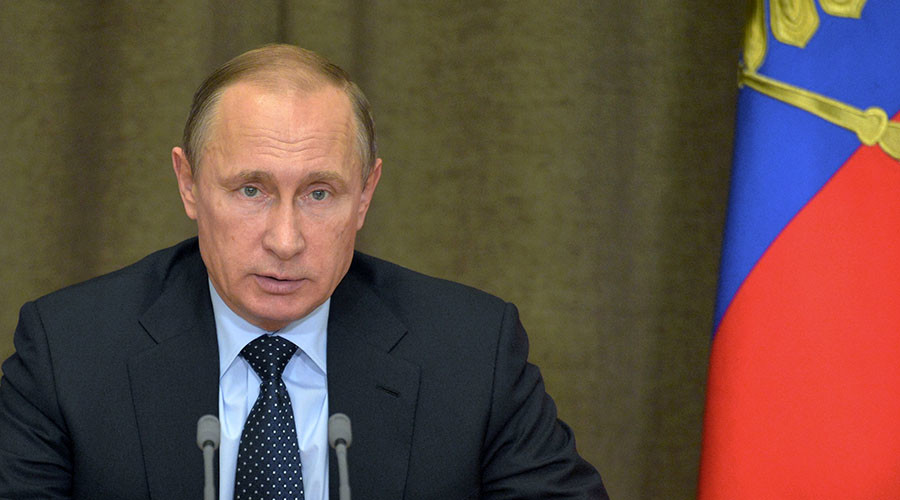
Russian President Vladimir Putin. © Alexei Druzhinin / RIA Novosti
Originally appeared at RT
“References to Iran and North Korea nuclear threats are just a cover for the true purpose [of NATO missile defense]. That is to neutralize the potential of other nuclear states not the US or its allies – primarily Russia,” Putin said during a meeting in Sochi dedicated to national military development. “The US is attempting to achieve strategic military superiority, with all the consequences that entails.”
Vladimir Putin has reminded that Iran reached a landmark nuclear deal with world powers in July. The agreement would remove sanctions that have crippled its economy, in exchange for severe restrictions on Tehran’s nuclear program.
Russia has been repeatedly told Iran is the main threat.
“Now, the Iranian problem is off the table – treaties have been signed and ratified. Yet, the work on missile defense continues, as before,” Putin said.
The Russian leader promised Russia would take the “necessary measures to respond by strengthening its own missile defense.”
“And at the first stage we are also going to develop strike weapons that can penetrate any missile defense shield.”
Over the last three years, the Russian defense industry has created and successfully tested a range of promising weapons that can operate against a multilayer missile defense system, the Russian president said.
In June, Putin announced Russia would add 40 new-generation intercontinental ballistic missiles to its nuclear arsenal this year. In briefing to the media after the Sochi meeting, Putin’s press secretary, Dmitry Peskov, insisted that Russia’s strategic warfare expenditures, would not emulate “the American path of extortionate expense.”
Putin said Russia’s concerns over US missile defense had been “ignored.”
“We have pointed out that these actions [construction of the shield] are an attempt to undermine the nuclear parity principle, and to destabilize the existing world and regional order.”
Last month, nine NATO states conducted a joint test of the ship-mounted anti-missile Aegis system in its first ever European exercise, off the coast of Scotland. Days later, the US staged a separate $230-million intercept of dummy nuclear launches near Wake Island in the Pacific.
First developed under Ronald Reagan, plans for a ballistic missile shield were revived by the George W. Bush administration in 2002. But the major rift with Russia began in 2007 when Poland and the Czech Republic agreed to host missile bases on their territory, despite protests from Moscow. The Czechs later withdrew from the US missile defense plans.
Since coming to power in 2008, Barack Obama has modified the plan, increasing its cost efficiency, but not its purpose. When it becomes fully operational – scheduled for early in the next decade – the system will comprise Aegis-equipped ships patrolling from Spain, and rocket equipped silos in Romania and Poland, with Turkey, Germany and other NATO states providing radar capability.



